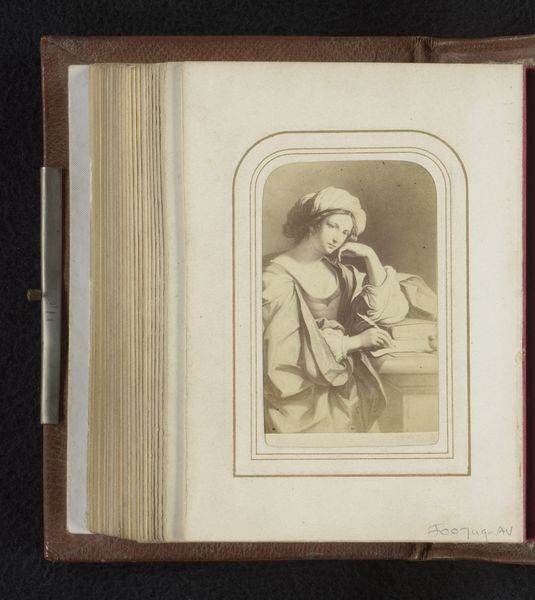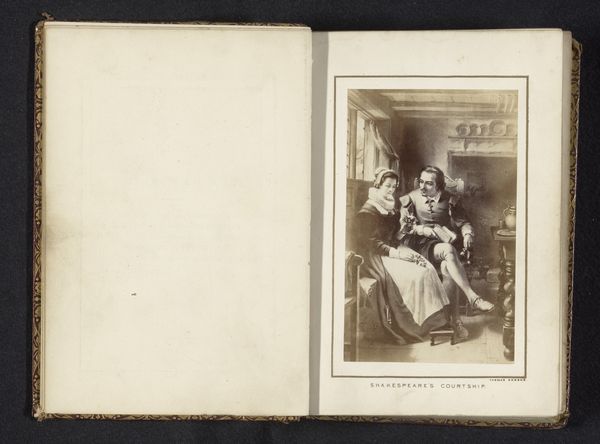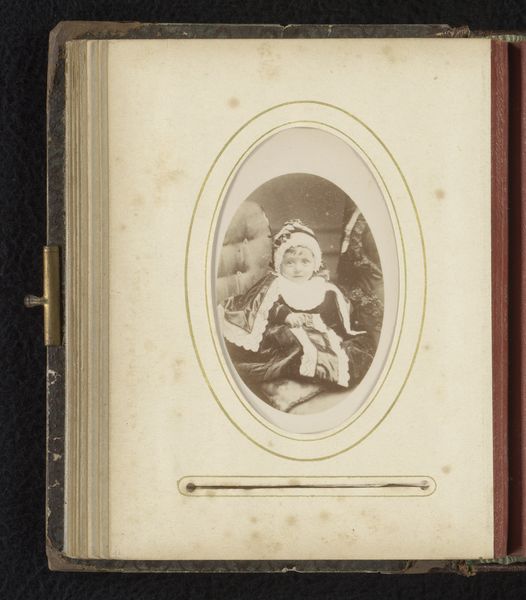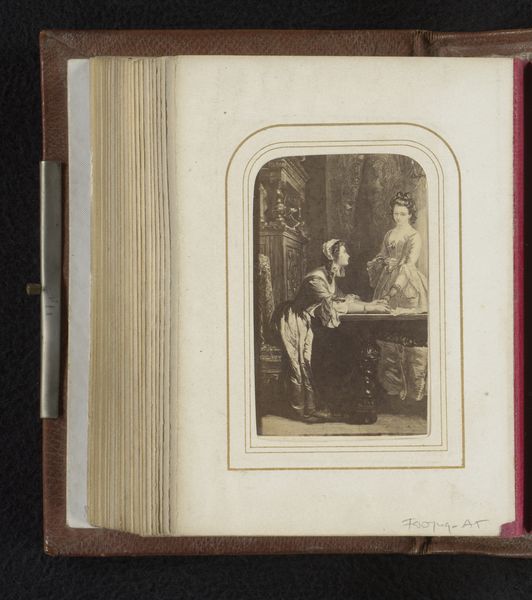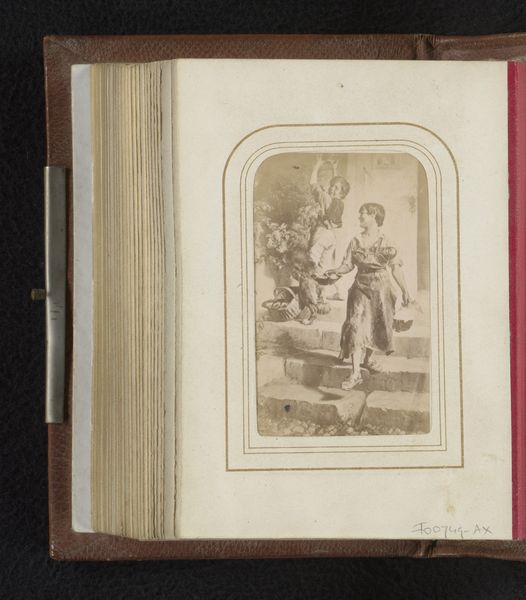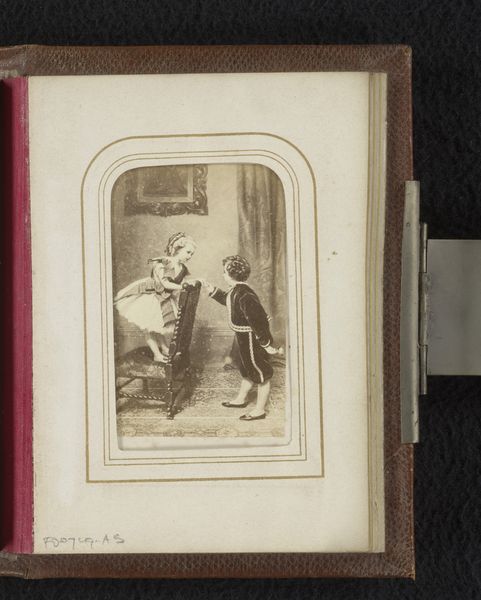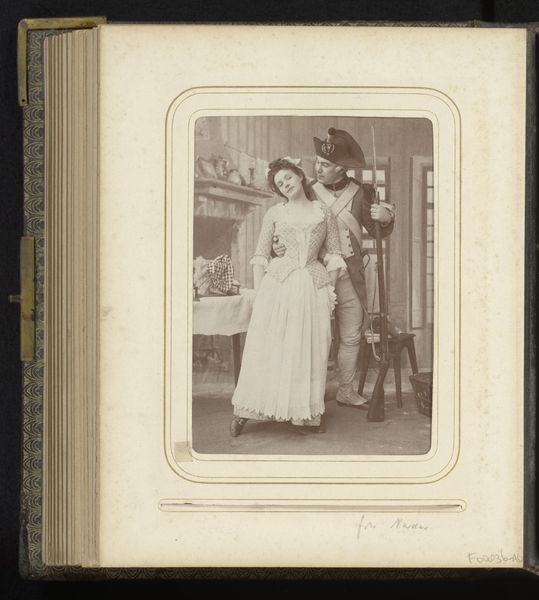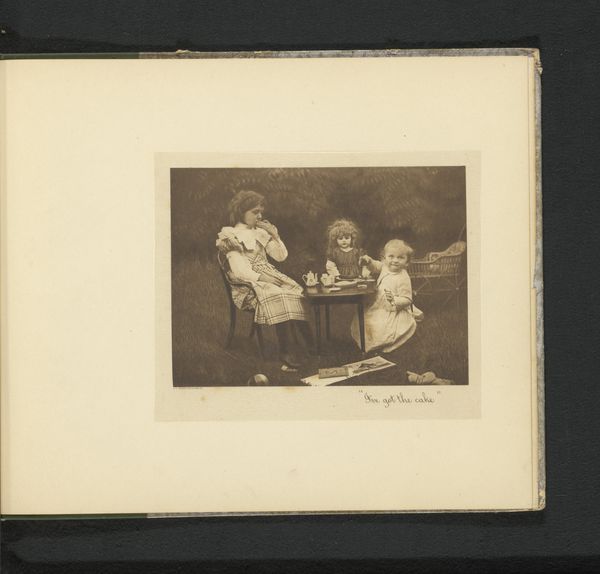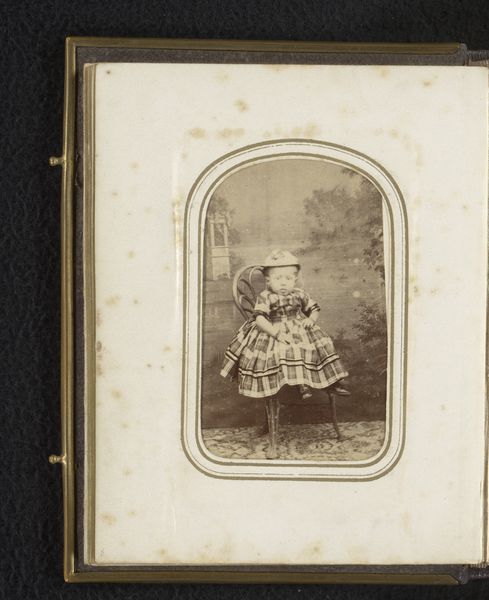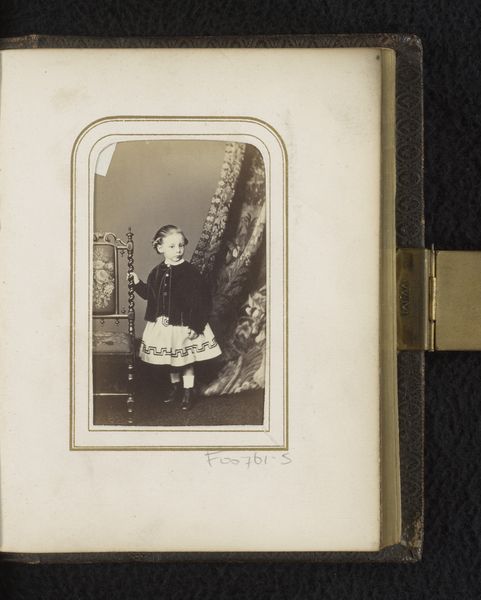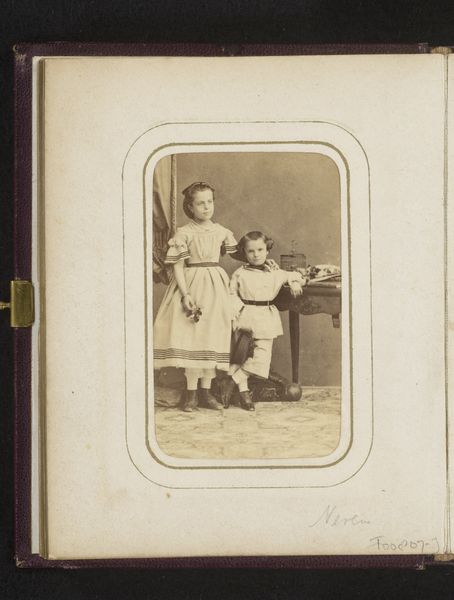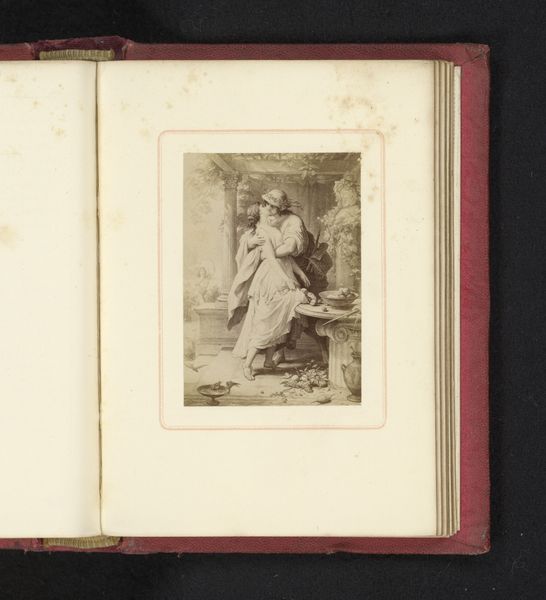
photography
#
portrait
#
photography
#
coloured pencil
#
genre-painting
Dimensions: height 86 mm, width 53 mm
Copyright: Rijks Museum: Open Domain
Editor: This is "Meisje in jurk, staand tegen een spiegel," or "Girl in Dress, Standing in front of a Mirror," a photograph taken sometime between 1860 and 1890 by Godfried de Jong. I find the framing within a larger album page rather intriguing. What strikes you most about the composition of this image? Curator: The photograph presents a fascinating study in doubling and self-regard. The use of the mirror is central; it not only reflects the figure but also introduces a spatial complexity. Note how the mirroring alters our perception of depth and dimension within the frame. The girl's dress, particularly its structure and how it drapes, is important. Consider how the folds and the lines of the fabric contribute to the overall form. Editor: So you are less interested in what the photo is *of* and more in how the scene is composed as an arrangement of forms and spaces? Curator: Precisely. The literal subject matter—the girl and the mirror—serves primarily as a vehicle. Focus on the formal interplay: the balance of light and shadow, the arrangement of shapes, the textures captured in the photographic medium. What impact does the monochromatic palette have on the image? Editor: It creates a sense of distance, almost like a memory fading. It helps flatten the image too, I suppose, because we're not distracted by color. Curator: An astute observation. By reducing the image to tonal variations, we are invited to examine the interplay of light and shadow, and the subtle gradations of texture, unburdened by chromatic distraction. These elements contribute significantly to the photograph's aesthetic value. Editor: I see what you mean. By focusing on the purely visual elements, we can discover the real artistry in something seemingly straightforward. Thanks! Curator: Indeed. Analyzing visual components helps us understand art and how the intrinsic qualities speak volumes.
Comments
No comments
Be the first to comment and join the conversation on the ultimate creative platform.
